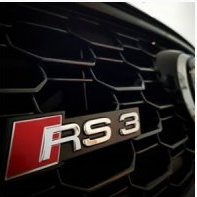Borg Warner EFR Series Turbo's V 2.0
Announcements
-
Similar Content
-
Latest Posts
-
By GabsReDeal · Posted
Thanks for your insight, it being basically useless will impact my decision for sure. I thought it may help the engine breath better I guess. But then again, I have also been told that tuning an RB20DE is also not worth it. Exactly, we follow EU Regulations. There is a bit more leeway on older vehicles. My Porsche 924 came without a cat from factory and managed to pass, they still mentioned that I have quite high emissions on it though. -
By soviet_merlin · Posted
My apologies, I stand corrected. Thanks for registering to mention this! And thank you for actually reaching out to the council to clarify. This is the sensible thing to do and the opposite of what I was alluding you were doing. I may have seen too much outrage and hate being fueled on the internet and it has made me a somewhat cynical old man. Sometimes it is easy to forget that there are real people behind websites and accounts. In my defence, CarExpert and CarExplore do read quite similarly at a glance. I shall try and do better in the future. (Please stick around to get the latest scoops on dealing with old Nissan shitboxes ) -
Don't bother. The poor little RB20 doesn't make enough gas flow to challenge the flow capabilities of even the littlest cat, and you won't make any extra power, and all you'll do it soot up your rear bumper. Plus....is Malta not runing under Euro regs?
-
Hey Daniel, sorry to hear that and thanks for posting up for us at a really hard time I only knew SmoothLine through the forums, we never met as we are based in different states, but when he was most active on here he was quite a while back so not many of the current crowd might remember him. I am pretty sure he was active in the Queensland SQU club but that is defunct now too (times are changing and we are all getting older). Farewell SmoothLine!
-
By ValgeKotkas · Posted
Turns out depending on whether the car was equipped with TCS or not there are different signals coming to the dash, meaning there are different speedo clusters. Wired in a speedo calibrator box from aliexpress and now works fine.
-







Recommended Posts
Create an account or sign in to comment
You need to be a member in order to leave a comment
Create an account
Sign up for a new account in our community. It's easy!
Register a new accountSign in
Already have an account? Sign in here.
Sign In Now